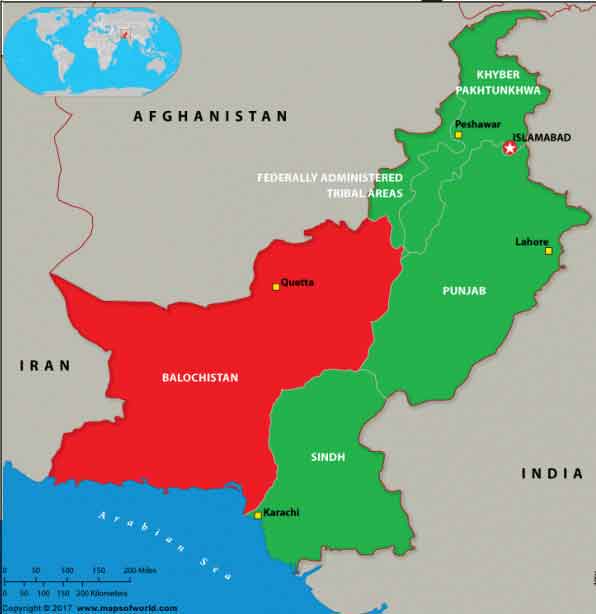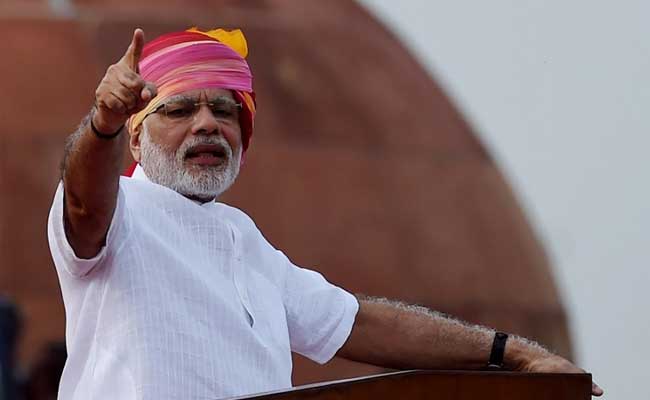 First Chinese ship, named Tianfu, finally docked on Sunday (Oct 16) at Pakistan’s Gwadar port that is center of $46 billion China-Pakistan Economic Corridor project between Beijing and Islamabad.
First Chinese ship, named Tianfu, finally docked on Sunday (Oct 16) at Pakistan’s Gwadar port that is center of $46 billion China-Pakistan Economic Corridor project between Beijing and Islamabad.
The China-Pakistan Economic Corridor (CPEC) is about 3,000 kilometers long consisting of highways, railways and pipelines that will connect China’s Xinjiang province to rest of the world through Pakistan’s Gwadar port.
The money China is planning to pour into Pakistan is more than twice the amount of all foreign direct investment Pakistan has received since 2008, and considerably more than the entire assistance from the United States, Pakistan’s largest donor until now, since 2002, according to a BBC report.
According to The Guardian, US largesse to Pakistan, including payments of $1.5bn a year since 2010 under the so-called “Kerry-Lugar” act, has failed to elicit anything like such a warm relationship. Even though much of the cash was funneled to the Pakistani army, the country’s most powerful institution, relations were often tense and the US polled among the least loved nations in opinion polls.
In September 2015, the government of China announced that the $230 million Gwadar International Airport project would no longer be financed by loans, but would instead be constructed by grants which the government of Pakistan will not be required to repay.
For the Chinese, the CPEC has a geo-strategic significance.
The corridor through Gwadar gives them their shortest access to the Middle East and Africa, where thousands of Chinese firms, employing tens of thousands of Chinese workers, are involved in development work.
The corridor also promises to open up remote, landlocked Xinjiang, and create incentives for both state and private enterprises to expand economic activity and create jobs in this under-developed region.
China could also be trying to find alternative trade routes to by-pass the Malacca straits, presently the only maritime route China can use to access the Middle East, Africa and Europe. Apart from being long, it can be blockaded in times of war.
The Straits of Malacca provide China with its shortest maritime access to Europe, Africa, and the Middle East. Approximately 80% pass of its Middle Eastern energy imports also pass through the Straits of Malacca. As the world’s biggest oil importer, energy security is a key concern for China while current sea routes used to import Middle Eastern oil are frequently patrolled by the United States’ Navy. The sea-route via the Straits of Malacca is roughly 12,000 kilometres long, while the distance from Gwadar Port to Xinjiang province is approximately 3,000 kilometres, and another 3,500 kilometres from Xinjiang to China’s eastern coast. [Wikipedia]
In addition to its significance to reduce Chinese dependence on the Sea of Malacca and South China Sea routes, the port of Gwadar will provide China an alternative and shorter route for energy imports from the Middle East, thereby reducing shipping costs and transit times. The currently available sea-route to China is roughly 12,000 kilometres long, while the distance from Gwadar Port to Xinjiang province is approximately 3,000 kilometres, with another 3,500 kilometres from Xinjiang to China’s eastern coast. As a result of CPEC, Chinese imports and exports to the Middle East, Africa, and Europe would require much shorter shipment times and distances. [Wikipedia]
The Chinese provinces of Xinjiang and Tibet were closer to Pakistani ports than to any port in China and development of a trade corridor linking Xinjiang to the Middle East via Gwadar held great prospects. 60 per cent of Chinese import of crude came from countries in the Gulf and the amount would increase in next decade. Because of the proximity of the Gulf countries to Gwadar, oil flow from the region to China will be facilitated.
“The Gwadar port will also guarantee China’s naval ships’ maintenance and supply in the Indian Ocean. The move is widely seen as crucial for China, especially as it is unlikely that Sri Lanka will open its ports to Chinese naval ships,” Zhao Gancheng, director of South Asia Studies at Shanghai Institute for International Studies told state-run Global Times.
The new Sri Lankan government headed by President Maithripala Srisena reversed his predecessor Mahinda Rajapaksa’s policy of allowing Chinese submarines to dock in Colombo, following India’s concerns.
Pakistan’s decision to hand over strategic Gwadar port to China is a matter of “serious concern” for India, Defence Minister A K Antony said in 2013. “Chinese are now constructing that port on Pakistan’s request. In one sentence, I can say that it is a matter of concern to us. My answer is simple and straightforward,” he told a press conference.
Gwadar Port is approximately 120 km from the Iranian border. It is located 380 km away from Oman, and near key oil shipping lanes from the Persian Gulf. The greater surrounding region is home to around two-thirds of the world’s proven oil reserves. It is also the nearest warm-water seaport to the landlocked, but hydrocarbon rich, Central Asian Republics, as well as Afghanistan.
Upon completion of CPEC-related infrastructure projects, transit times between Kashgar and Pakistan’s Gwadar Port will be greatly reduced, which in turn will also reduce transit times to the Kyrgyzstan and hydrocarbon-rich Kazakhstan through already existing overland routes. The Chinese government has already upgraded the road linking Kashgar to Osh in Kyrgyzstan via the Kyrgyz town of Erkeshtam while a railway between Urumqi, China and Almaty, Kazakhstan has also been completed as part of China’s One Belt One Road initiative. Numerous land crossings already exist between Kazakhstan and China as well. Additionally, the Chinese government has announced plans to lay railway track from Tashkent, Uzbekistan, towards Kyrgyzstan with onwards connections to China and Pakistan’s coast. [Wikipedia]
Interestingly, In September 1958, the Gwadar enclave was purchased by Pakistan from Oman for US$3 million and Gwadar officially became part of Pakistan in December 1958, after 200 years of Omani rule.
It is expected that by 2017, the port will handle over one million tons of cargo, most of which will consist of construction materials for other CPEC projects. China Overseas Port Holding Company (COPHC) plans to eventually expand the port’s capacity to 400 million tons of cargo per year. Long terms plans for Gwadar Port call for a total of 100 berths to be built by 2045.
Abdus Sattar Ghazali is the Chief Editor of the Journal of America (www.journalofamerica.net) email: asghazali2011 (@) gmail.com














































